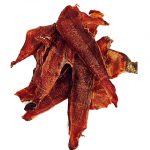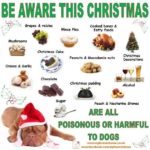Dr. Jean Dodds, Hemopet:
Nutrition and the Immune System
Wholesome nutrition is the key to maintaining a healthy immune system and resistance to disease. Commercial foods ingested by animals on a regular basis may not be balanced in terms of major nutrients, minerals and vitamins, and some continue to add chemicals to the final product to enhance its stability and shelf-life. Nutritional deficiencies or imbalances as well as exposures to various chemicals, drugs and toxins present a continual immunological challenge which can suppress immune function, especially in those animals genetically susceptible to immune dysfunction (immune deficiency, autoimmunity, allergies).
The exciting new field of nutrigenomics is an emerging science that studies the molecular relationships between nutrition and the response of genes in promoting health. Different diets elicit different patterns of gene and protein expression as well as metabolite production; these are termed molecular dietary signatures.
Genetic differences between individuals lead to quantitative variations in dietary requirements for energy and nutrient needs, and to maintain health. Also, genetic defects may result in inborn errors of metabolism that affect one or more pathways involving nutrients or their metabolites. While minimal and maximal nutrient requirements have been established for most vitamins and trace mineral elements, optimum amounts for every individual cannot be assumed. Examples of important vitamin and mineral requirements in this regard include vitamin C, vitamin E and selenium, vitamin A, copper and vitamin B12. Similarly, a wide variation occurs in the energy needs of dogs depending on their breed, age, sex, and size.
Nutritional factors that play an important role in immune function include zinc, selenium and vitamin E, vitamin B6 (pyridoxine), and linoleic acid. Deficiency of these compounds impairs both humoral as well as cell-mediated immunity. The requirement for essential nutrients increases during periods of rapid growth or reproduction and also may increase in geriatric individuals, because immune function and the bioavailability of these nutrients generally wanes with aging. As with any nutrient, however, excessive supplementation can lead to significant clinical problems, many of which are similar to the respective deficiency states of these ingredients. Supplementation with vitamins and minerals should not be viewed as a substitute for feeding premium quality fresh and/or commercial pet foods.
Synthetic antioxidants like butylated hydroxyanisole (BHA) and butylated hydroxy-toluene (BHT) have been used as preservatives in human and animal foods for more than 30 years. More recently pet food manufacturers preferred to use ethoxyquin, because of its excellent antioxidant qualities, high stability and reputed safety. But, significant controversy arose about the safety of ethoxyquin when chronically fed at permitted amounts in dog and cat foods. Toy breed dogs were particularly at risk because they ingest proportionately more food and preservative for their size in order to sustain their metabolic needs.
Naturally occurring antioxidants (vitamins E and C, citric acid) are used almost exclusively today, in response to consumer and professional queries about the chronic effects of feeding synthetic chemical antioxidants to pets.
Nutrition and Thyroid Metabolism
Nutritional influences can have a profound effect on thyroid metabolism. The classical example is the iodine deficiency that occurs in individuals eating cereal grain crops grown on iodine-deficient soil. This will impair thyroid metabolism because iodine is essential for formation of thyroid hormones. However, too much iodine can be as harmful to thyroid function as too little. Today’s commercial kibbles contain plenty of iodine, so caution is advised when adding extra supplements that include kelp and seaweed. Moderation is the general rule with supplements.
While commercial pet food manufacturers compensate for variations in basal ingredients by adding vitamin and mineral supplements, it is difficult to determine optimum levels for so many different breeds of animals having varying genetic backgrounds and metabolic needs.
Another link has recently been shown between selenium deficiency and hypothyroidism. Cereal grain crops grown on selenium-deficient soil will contain relatively low levels of selenium. The selenium-thyroid connection has significant clinical relevance, because blood, but not tissue, levels of thyroid hormones rise in selenium deficiency. Thus, selenium-deficient individuals showing clinical signs of hypothyroidism could be overlooked on the basis that blood levels of thyroid hormones appear normal. The selenium issue is further complicated because the synthetic antioxidants still used in some foods to protect fats from rancidity can impair the bioavailability of vitamin A, vitamin E and selenium, and alter cellular membrane function, metabolism and detoxification.
Iron and zinc also are important minerals in regulating thyroid metabolism. Vitamin D (as vitamin D3) is now called a co-hormone of thyroid function as it needs to be present at sufficient levels in all cells in order for the thyroid hormone to function at the cellular level. Be cautious about supplements as over- supplementation with vitamin D3 can lead to hypercalcemia.
Copper plays an important role in thyroid metabolism, especially in hormone production and absorption. Copper stimulates the production of thyroxine (T4), and helps control the body’s calcium levels. Like any supplement , however, excessive supplementation with copper can lead to copper storage disease and eventually to liver failure.
Because animals with autoimmune thyroid disease have generalized metabolic imbalance and often have associated immunological dysfunction, it is advisable to minimize their exposures to unnecessary drugs, chemicals and toxins, and to optimize their nutritional status with healthy balanced diets. Families of dogs susceptible to thyroid and other autoimmune diseases show generalized improvement in health when fed premium cereal-based diets preserved naturally with vitamins E and C rather than with the synthetic chemical antioxidants mentioned above. Fresh vegetables cooked with Italian herbs and garlic, dairy products such as yogurt or low fat cottage cheese, or a variety of meats and whitefish can be added.
Nutritional Management (Commercial, Home-Made and Raw Food Diets)
Many veterinarians treating animals suffering from immunological diseases appreciate that alternative nutritional management is an important step in minimizing their patient’s environmental challenges. The results of this approach have been remarkable. The replacement food must be of good quality and preferably of relatively low protein content (20-22%). Increasing carbohydrate and reducing protein content, while maintaining high quality protein, has been shown to be beneficial for many affected animals and is also believed to have a positive effect on behavior. Diet and behavior appear to be linked because certain highly nutritious foods may aggravate the condition of dogs with behavioral problems (dominant aggression, hyperactivity, and fear). For allergic animals, elimination diets with restricted or novel antigen source are given for 6-12 weeks to evaluate their benefit to the patient.
Homemade diets can also be used provided that the formula is properly balanced. All other food supplements, including treats, are withdrawn. Example ingredients that have been used successfully, include whitefish, rabbit, venison, duck, ostrich, emu, buffalo, and turkey mixed with potato, sweet potato and other vegetables (except onions and cruciferous vegetables). Grains are often avoided, at least initially, although novel grains like quinoa, sorghum, barley or flax usually have been well tolerated.
For animals with liver disease, the author’s liver “cleansing diet” includes:
White potato + sweet potato (50/50) and white fish — 2/3 potato mix and 1/3 fish. Season with garlic, mixed Italian herbs or parsley, salt and pepper. Later, can add chopped carrots, zucchini, yellow squash, green beans, spinach, and scrambled eggs, if these are tolerated. An infant liquid multivitamin or product like Missing Link should be added, if feeding the diet for long term.
Raw food diets have been gaining in popularity as well. A key feature of these diets is the variety they provide. One of the prototype diets [BARF (bones and raw food)] of Dr. Ian Billinghurst recommends feeding a dog 60% raw meaty bones (chicken backs,wings and necks), with the rest of the diet composed of ground vegetables mixed with ground meat, and supplements such as kelp, vitamin E and vitamin C. Nutritional analyses on some commercially available raw diets suggest that the raw meaty bones commonly used provide 40-70% protein, and the meat/vegetable mixtures range from 20-50% protein. The question has arisen about the potential for such high protein diets to affect renal function when fed continuously, as high protein diets are reported to induce renal hypertrophy, and increase renal blood flow and glomerular filtration rate. While this concern may not pertain to healthy dogs, it could play a role in dogs with previously compromised renal function.
Maintaining the appropriate ratio of trace minerals, vitamins, fatty acids and other nutritive elements is especially important for patients with acute and chronic diseases, as their metabolic demands have increased to sustain cell turnover and tissue repair. Typical supplements include: vitamin-mineral mix, antioxidants (vitamins A,C, D, and E and selenium), digestive enzymes, brewer’s yeast, kelp, honey, coat additives, apple cider vinegar, hydrochloric acid (used sparingly), yoghurt, Willard Water, liver, eggs, garlic, and plenty of fresh water.
Vitamin A and E have been shown to enhance immune function in small animals, as the former can beneficially influence T-helper responses, and the latter is known to improve both cellular and humoral immunity. Dietary carotenoids, especially lutein and beta-carotene, have been reported to modulate both cell-mediated and humoral immunity in dogs but not in cats.
Raw Food Diet Study
In collaboration with Drs. Susan Wynn and Joe Bartges, we investigated the basic clinical laboratory parameters of 256 healthy adult dogs of varying ages and breed types being fed raw food diets for at least 9 months. The same laboratory (Antech Diagnostics) analyzed the samples from 227 of the dogs. From this group, there were 87 dogs fed the classical BARF diet of Dr. Ian Billinghurst, 46 dogs were fed the Volhard diet of Wendy Volhard, and the remaining 94 dogs were fed other types of custom raw diets.
There were 69 dog breeds represented, including 233 purebreds, 16 crossbreds, 1 mixed breed and 6 of unknown breed type. The predominant breeds represented included: 28 Labrador Retreivers, 21 Golden Retrievers and 21 German Shepherd Dogs, 10 Whippets, 8 Shetland Sheepdogs and 8 Bernese Mountain Dogs, 6 Rottweilers, 6 Border Collies, 6 Doberman Pinschers, and 6 German Pinschers, and 5 Cavalier King Charles Spaniels, 5 Australian Shepherds, 5 Borzoi, and 5 Great Danes. Most of the dogs were neutered males (73) or spayed females (85), whereas there were 31 intact males and 32 intact females. Another 6 dogs were of unknown sex. The mean age of the group was 5.67 ± 3.52 years (mean ± SD); and the mean length of time fed a raw food diet was 2.84 ± 2.54 years. The data from this group of dogs were compared to the same laboratory parameters measured at Antech Diagnostics from 75 healthy adult dogs fed a commercial cereal-based kibbled diet. Preliminary statistical comparisons of results for the raw and cereal-based diets found them to be essentially the same with the following notable exceptions:
• Higher packed cell volume (hematocrit) in all raw diet fed groups (range of 51.0 ± 6.6 – 53.5 ± 5.6 %) versus cereal-based kibble (47.6 ± 6.1 %).
• Higher blood urea nitrogen (BUN) in all raw diet fed groups (range of 18.8 ± 6.9 – 22.0 ± 8.7 mg/dL) versus cereal-based kibble (15.5 ± 4.7 mg/dL).
• Higher serum creatinine in the Volhard raw diet group only (1.20 ± 0.34 mg/dL) versus cereal-based kibble (1.07 ± 0.28 mg/dL)
Results from this initial analysis indicated that dogs fed raw meats (natural carnivores) have higher red blood cell and blood urea nitrogen levels than dogs fed cereal-based food (obligate omnivores). A recently completed detailed analysis of the other parameters showed that statistically different parameters also included higher hemoglobin, MCH, MCV, MCHC, total protein, albumin, BUN/creatinine ratio, calcium, sodium, osmolality, and magnesium. Statistically lower values were seen for total leukocyte, neutrophil, and lymphocyte counts, phosphorus and glucose. Thus, the normal reference values for dogs fed raw food diets should be revised.
The intake of proportionately large amounts of raw meat protein and the significantly higher BUN and other concentrations found here raise the possibility of spillover into the urine of measurable amounts of urea nitrogen and/or albumin. If so, are there potential short and long term clinical consequences ?
Accordingly, the presence of microlbuminuria [an indicator of early renal disease] was assessed in dogs fed exclusively on raw foods for at least 12 months in dogs using the Heska ERD – HealthScreen ® test kit. The urine of 37 dogs was evaluated and results indicated that feeding a diet of raw ingredients does not appear to cause leakage of albumin into the urine in most of the dogs tested. In five dogs, there was a low-grade positive reaction in the test, but two of them were found to have urinary tract infections. The other three dogs were lost to follow up.
New Diagnostics for Food Sensitivity or Intolerance
The latest development in animal diagnostics addresses the optimal foods for an individual’s genetic makeup and food sensitivities or intolerances. At the simplest level of diagnostic screening, cheek swabs are taken by the pet owner and submitted to a veterinary diagnostic lab for testing.
Diet is a long recognized cause of hypersensitivity-like skin reactions in dogs, cats, & people.
Immediate hypersensitivity occurs within minutes to hours of eating an offending food, whereas delayed sensitivities occur 2-72 hrs after eating; so they can be more difficult to connect symptoms with the foods eaten. There is a high correlation of delayed sensitivity with the amount and frequency of food eaten.
The primary food allergens are : corn, wheat, soy, beef, eggs, milk.
Secondary food allergens are: lamb, rabbit, venison, buffalo, chicken, turkey, barley, millet, oatmeal, salmon, white fish, rice, quinoa, potatoes, and peanuts.
Food intolerance is the third most common immunologically reactive condition after flea bite sensitivity and atopy (inhalant allergy); it makes up 1-10% of all allergic skin disease. It has no age, breed, or sex predilection, and most affected animals have been eating offending foods for more than 2 years.
The major complaint of food intolerance is pruritis (itching). The itching and scratching is bilateral, and there is often inflammation of the external ear canals (otitis externa). Secondary skin disease such as seborrhea (both dry or oily) and pyoderma is common.
Management and therapy involves diet elimination trials, each for 3-6 weeks; but, there is often poor compliance. Thus, diets need to be individualized, using the principles of nutrigenomics.
Additives and supplements should be avoided for these animals, as should switching often from diet to diet. About 1-15% of cases have concurrent gastrointestinal tract issues, and some cases have swollen lymph nodes, especially in cats. Affected pets have tension-fatigue, malaise, and dullness. These sensitivities are non-seasonal and poorly responsive to steroids
Previous testing for food sensitivity was typically based on IgE and IgG testing on serum from healthy and affected pet animals. However, these serum tests correlate poorly with clinical experience from food elimination trials based on test results.
Newer testing for food sensitivity use simple ELISA-based tests of saliva rather than serum.
IgA or IgM antibodies to foods are measured in saliva; these antibodies to foods appear in saliva months before a diagnosis of IBD (inflammatory bowel disease) or the “leaky gut syndrome” is made. Saliva testing can thus reveal the latent or pre-clinical form of food sensitivity.
Future testing of saliva envisions a saliva screening kit, point-of-service (POS) owner/ vet clinic testing. Tests for salivary IgA and IgM reactions are performed in healthy pets and those with known or suspected food intolerances. The pet owners obtain a test kit [from their veterinarian or pet supply store], follows directions, adds saliva, seals the kit, and sends it to the diagnostic laboratory. Saliva testing is performed several times a year
References
● Bauer, J E. Evaluation of nutraceuticals, dietary supplements, and functional food ingredients for companion animals. J Am Vet Med Assoc 218:1755-1760, 2001.
● Berry M J, Larsen P R. The role of selenium in thyroid hormone action. End Rev, 13(2): 207-219, 1992.
● Burkholder W J, Swecker W S Jr. Nutritional influences on immunity. Sem Vet Med Surg (Sm An), 5(3): 154-156, 1990.
● Der Marderosian QA. The Review of Natural Products. Facts and Comparisons, St. Louis, MO, Lippincott, Williams & Wilkins, 2001, pp 389-390, 508-509.
● Dodds W J. Complementary and alternative medicine: the immune system. Clin Tech Sm An Pract, 17(10: 58-63, 2002.
● Dodds W J, Donoghue S. Interactions of clinical nutrition with genetics, Chapter 8. In: The Waltham Book of Clinical Nutrition of the Dog and Cat. Pergamon Press Ltd., Oxford, 1994, p.105-117.
● Dodds W J. Pet food preservatives and other additives, Chapter 5. In: Complementary and Alternative Veterinary Medicine. Mosby, St. Louis, 1997; pp 73-79.
●Dodds, WJ. Nutrigenomics as it relates to the skin. Proc Am Hol Vet Med Assoc 2009, Fitchburg, MA.
●Fekete, SG, Brown, DL. Veterinary aspects and perspectives of nutrigenomics: a critical review. Acta Vet Hungarica 55 (2): 229–239, 2007.
●Roudebush P. Ingredients associated with adverse food reactions in dogs and cats. Adv Sm An Med Surg, 15(9): 1-3, 2002.
●Swanson, K S, Schook, L B. Canine nutritional model: influence of age, diet, and genetics on health and well-being. Current Nutr Food Sci 2 (2), May 2006 , pp. 115-126.
●Swanson KS, Schook LB, Fahey, Jr GC. Nutritional genomics: implications for companion animals. J Nutr 133:3033-3040, 2003.
●Vojdani A. Detection of IgE, IgG, IgA and IgM antibodies against raw and processed food antigens. Nutr & Metabol 6:22-37, 2009.
● Volhard W, Brown K L. The Holistic Guide for a Healthy Dog. Howell Book House, New York, 1995, 294 pp.
● Wynn S G, Bartges J, Dodds W J. Raw meaty bones-based diets may cause prerenal azotemia in normal dogs. AAVN Nutrition Research Symposium, June 2003 (abstr.).











